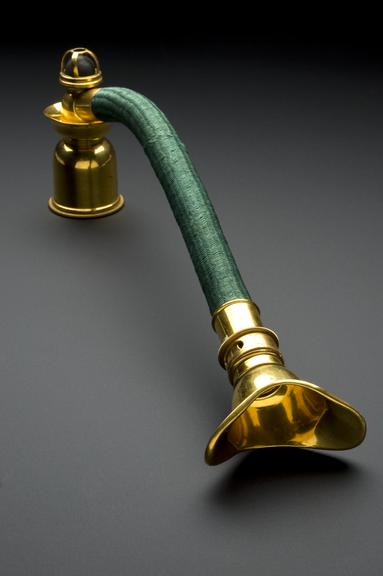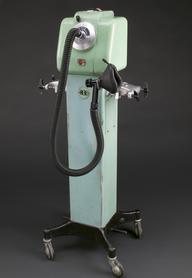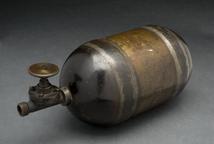


Anaesthetic inhaler, for chloroform, brass and rubber, by Charriere of Paris, from Charriere Collin and Gentile collection, circa 1850
When in use, a chloroform-soaked sponge was placed in the brass chamber at one end of the anaesthetic inhaler. The patient would inhale the vapours through the textile tube and brass mouth piece. Chloroform was a popular anaesthetic in use from the late 1840s onwards. It gradually began to replace ether, which could cause vomiting and lung problems. However, this trend was reversed when the potentially fatal toxicity of chloroform became apparent. The inhaler was made by Charrière, a surgical instrument maker in Paris, and was purchased from the Charrière, Collin and Gentile collection in 1978 when the company closed.
Details
- Category:
- Anaesthesiology
- Collection:
- Sir Henry Wellcome's Museum Collection
- Object Number:
- A606310
- Measurements:
-
overall: 113 mm x 370 mm x 78 mm, .4kg
- type:
- inhaler
- credit:
- Drouot




